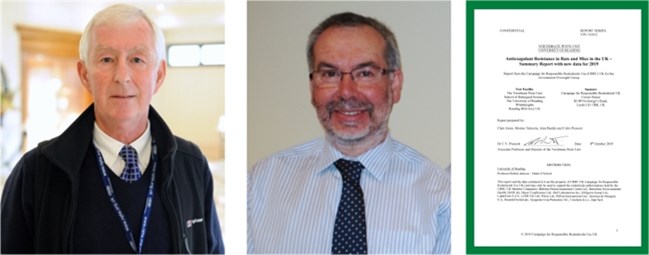Rodenticide resistance in rats has been confirmed in several new areas including Durham, Northumberland, Tyneside, North Yorkshire, Greater Manchester, along the River Severn valley from Somerset to North West Shropshire, Northern East Anglia and Devon.
Evidence of the spread of resistance comes from surveillance work undertaken in 2019 by the University of Reading’s Vertebrate Pests Unit. It covers house mice as well as rats and finds 93% and 61% respectively carry at least one rodenticide-resistance gene. Among rats, nearly half have inherited the gene from both parents – the most severe form of resistance.
The new locations add to an existing widespread presence in central southern England. One of the genes previously identified only on the Anglo-Welsh border was found in North Yorkshire, Merseyside and Essex. The most severe resistance gene, already present in much of central southern England, was found for the first time in Devon.
The report was commissioned by the Campaign for Responsible Rodenticide Use (CRRU) UK as part of the UK Rodenticide Stewardship Regime for the Government Oversight Group.
|
|
CRRU chairman Dr Alan Buckle commented: “This report will help pest professionals, farmers and gamekeepers make well informed choices about which anticoagulant active substance to use.”
According to one of the report’s co-authors, Prof Colin Prescott, the widespread dominant presence of resistance genes across central southern England makes it hardly surprising they are spreading at the margins. He said: “This appears to be happening, for example, into Devon on the west and into Kent and East Sussex in the east.”
He continued: “This boundary creep in not the only observation. A serious concern is finding one of the resistance genes appearing to leap-frog to East Anglia and West Yorkshire from its Hampshire and Berkshire origin. This suggests perhaps new original mutations entirely separate from an existing one, or that rats with the gene have somehow been transported to these new localities and are flourishing there.”
The work has been funded by the Rodenticide Resistance Action Committee of CropLife International and continues in 2020. The main source of samples for analysis is tail-tips submitted voluntarily by pest controllers.
Since it began, Prof Prescott says the few samples submitted from English midland counties and much of Wales and Scotland have detected only rodenticide-susceptible animals. “Quite why these regions retain susceptibility, or indeed whether this is in fact the case, may only be answered by more detailed genetical studies,” he adds.
If you work in one of these priority areas (the Midlands, Wales or Scotland) then please submit tail tip samples from rats that died by non-poison means. Full instructions on how to submit your tail tips here.
The surveillance study report, with details of genes, geography and implications, is available from the CRRU website or from the Pest library.


